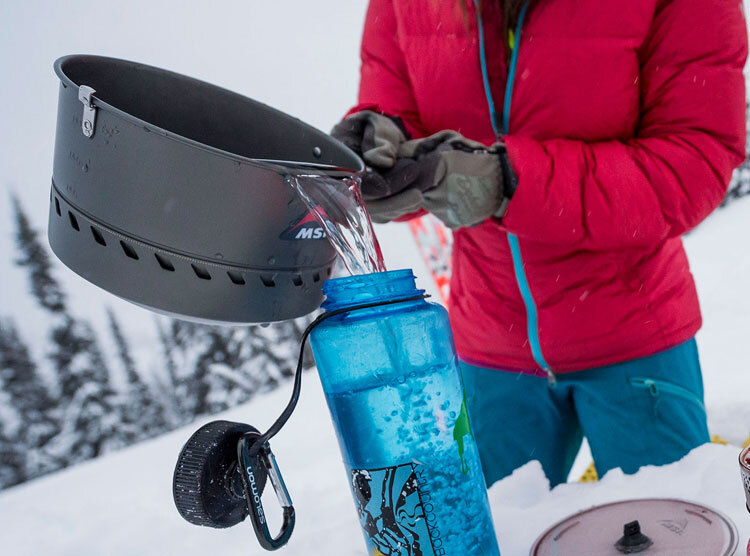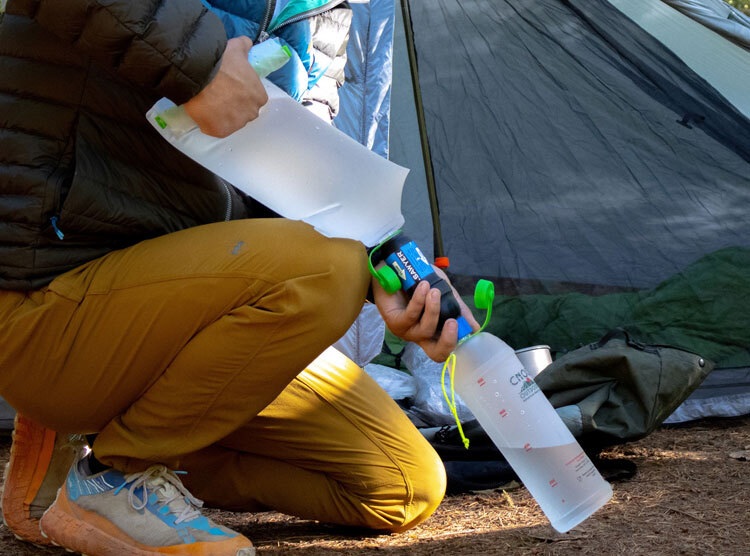The Ultimate Guide to Water Treatment and Purification
Posted by Andy Neil on Feb 24, 2025

Why Water Purification Matters
Access to safe drinking water is essential when exploring the outdoors. Carrying large amounts of water is impractical, adding unnecessary weight and making hikes more strenuous. While bringing enough water for a short day hike isn’t a major concern, multi-day hikes or wild camping trips require water for more than just drinking—it’s also needed for cooking, cleaning, and making tea or coffee. Since 1 litre of water weighs 1 kg, carrying multiple litres quickly becomes burdensome. Instead of hauling excessive water, using purification methods allows you to safely drink from natural sources, reducing pack weight while ensuring proper hydration.


The Risks of Drinking Untreated Water
Drinking untreated water can cause serious health issues, including gastrointestinal illness, dehydration, and, in extreme cases, life-threatening diseases. Therefore, it’s essential to understand the risks and take necessary precautions when consuming water from natural sources.
Even in the UK, where many water sources appear clean, they may still contain harmful pathogens and contaminants that pose significant health risks. Natural water sources can harbour:

● Protozoa (e.g., Giardia, Cryptosporidium) – Single-cell organisms from human and animal waste. They can resist chemical treatments but can be removed via filtration, UV light, or boiling.
● Bacteria (e.g., E. coli, Salmonella, and Cholera)—These organisms can reproduce in water and cause gastrointestinal illness. Most can be removed with filters, UV treatment, and boiling.
● Viruses (e.g., Hepatitis A, Norovirus, and Rotavirus)—Though uncommon in the UK, viruses can be present in contaminated water. They are too small for most filters but are susceptible to chemical treatment, UV light, and boiling.
● Multicellular Parasites (e.g., Hookworm and Roundworm) are large and easily filtered or destroyed by boiling.
● Chemical Contaminants: Agricultural run-off, heavy metals, and other pollutants may be present near farmland or industrial areas.
The primary threats in remote areas are bacteria and protozoa, while viruses are rarely an issue in UK wilderness settings.
Water Collection Best Practices
Before purifying water, choosing the best possible source reduces contamination risk:
● Opt for fast-moving water from streams or rivers rather than stagnant pools.
● Collect water upstream of campsites, trails, or grazing livestock.
● Avoid sources near human activity, farmland, industrial areas, or algae-covered surfaces.

Treatment Methods

1. Boiling
Boiling water is the oldest and most reliable method, effectively killing all pathogens. However, it takes time to boil and cool down, making it impractical for long hikes when frequent water intake is required.
● Effectiveness: Kills protozoa, bacteria, viruses, and parasites.
● Method: Bring water to a rolling boil for at least one minute (or three minutes at higher altitudes).
● Drawbacks: It does not remove chemical contaminants or particulate matter.
2. Filtration
Filtration is the most popular choice among hikers, with Bottle/Squeeze Filtration being the top option due to its convenience and ease of use.
● Effectiveness: Removes bacteria, protozoa, and parasites; most filters do not remove viruses.
Types:
● Bottle/Squeeze Filtration: Compact and lightweight, perfect for the fast and light solo hiker.
● Pump Filtration: Manually operated.
● Gravity Filtration: Passive method requiring no pumping. A good choice for groups.
Considerations: Look for filters rated at 0.1 microns or smaller for best results.
A Note on Bottle/Squeeze Filtration
This method is overwhelmingly popular among hikers due to its lightweight and convenient design. These filters are integrated into a bottle or screw onto a bottle/collapsible bag, allowing hikers to fill up directly from a stream or river and drink instantly through the filter. Most models require only a simple squeeze to force water through the filtration membrane, making them extremely user-friendly.
One of the most significant advantages of bottle/squeeze filters is that they can be used on the go without any setup; you don't even have to take your pack off. They require no batteries, chemicals, or complex mechanisms. However, they require regular backflushing to prevent clogging. Backflushing involves reversing the flow of water through the filter to clean out any trapped particles. Despite this minor upkeep, their efficiency, ease of use, and portability make them the go-to choice for most hikers.
3. Chemical Purification
Chemical treatment is a lightweight, compact option ideal for emergencies or as a backup, but it takes time to work and can affect water taste.
● Effectiveness: Kills or inactivates most protozoa (some do not kill Cryptosporidium), bacteria, and viruses.
● Method: Chlorine dioxide or iodine tablets/drops added to water.
● Drawbacks: It is less effective in cloudy water, alters taste, and requires a waiting period (30 minutes to 4 hours).
4. UV Purification
Though highly effective, UV purification can be impractical as it requires battery power and is best used alongside filtration to ensure water clarity.
● Effectiveness: Destroys bacteria, viruses, and protozoa.
● Method: UV light is used to neutralise pathogens.
● Drawbacks: Clearwater is required, pre-filtering may be necessary, and device reliability depends on battery power.
Emergency Water Treatment
If no proper treatment method is available:
● Allow water to settle and filter through a cloth to remove debris.
● In dire situations, drinking untreated water may be necessary to prevent dehydration, but it carries health risks.
Final Tips
● Always carry a backup purification method, even on a day hike; having a backup plan is always good practice.
● Testing and familiarising yourself with your treatment system before heading into the wilderness is crucial.
● When in doubt, use a combination of methods (e.g., Filtration followed by Chemical Treatment).
By following these guidelines, you can ensure a safe and lightweight approach to water management on your outdoor adventures. Happy hiking!

 |
||
 |
||
| Andy Neil |
||
|
Andy has been a keen long-distance hiker and wild camping enthusiast since he completed the Cleveland Way in 2015. Since then, he has walked thousands of trail miles all over the UK and is an active member of the Wild Camping UK community, being an admin of the largest wild camping community on Facebook. He strongly advocates for responsible wild camping and believes it is important to leave no trace when camping in the wilderness. He joined the UOG team in 2021 and works as a website developer and content creator. |
||
Access to safe drinking water is essential when exploring the outdoors. Carrying large amounts of water is impractical, adding unnecessary weight and making hikes more strenuous. While bringing enough water for a short day hike isn’t a major concern, multi-day hikes or wild camping trips require water for more than just drinking—it’s also needed for cooking, cleaning, and making tea or coffee.



